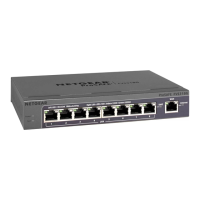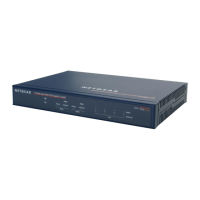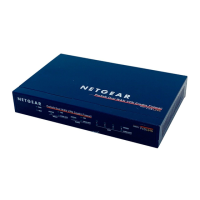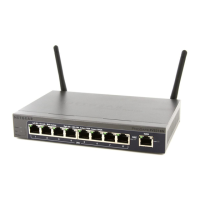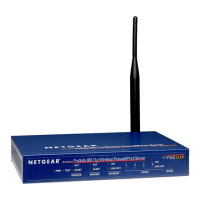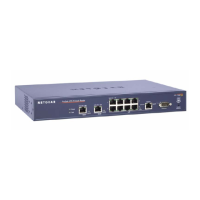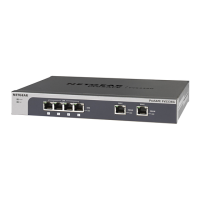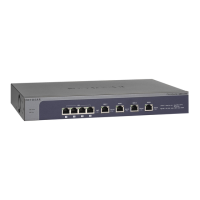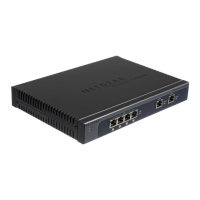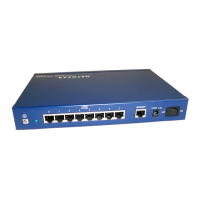Wireless Module for the UTM9S
568
ProSecure Unified Threat Management (UTM) Appliance
WMM QoS Priority Settings
Wi-Fi Multimedia (WMM) is a subset of the 802.11e standard. WMM allows wireless traffic to
have a range of priorities, depending on the type of data. Time-dependent information, such
as video or audio, has a higher priority than normal traffic. For WMM to function correctly,
wireless clients also need to support WMM.
By enabling WMM, you allow Quality of Service (QoS) control for upstream traffic flowing
from a wireless client to the UTM9S and for downstream traffic flowing from the UTM9S to a
wireless client.
WMM defines the following four queues in decreasing order of priority:
• Voice (Queue 4). The highest priority queue with minimum delay, which makes it ideal for
applications like VoIP and streaming media.
• Video (Queue 3). The second highest priority queue with low delay is given to this queue.
Video applications are routed to this queue.
• Best Effort (Queue 2). The medium priority queue with medium delay is given to this
queue. Most standard IP application use this queue.
• Background (Queue 1). Low priority queue with high throughput. Applications, such as
FTP, that are not time-sensitive but require high throughput can use this queue.
Differentiated Services (DiffServ) QoS packet matching lets you map each Differentiated
Services Code Point (DSCP) value (0 to 63) to one queue (1, 2, 3, or 4). You can map
different DSCP values to the same queue. Based on the DSCP value in a packet’s IP header,
the packet is placed in the queue to which you mapped the DSCP value.
To enable and configure WMM QoS priority settings:
1. On the Profiles screen (see Figure 324 on page 553), select the check box to the left of
the profile.
2. Under the List Of Profiles table, click the WMM button. The WMM screen displays:
